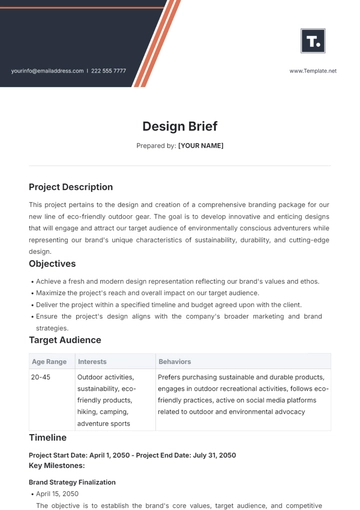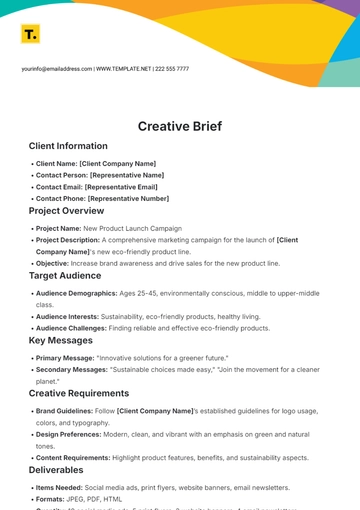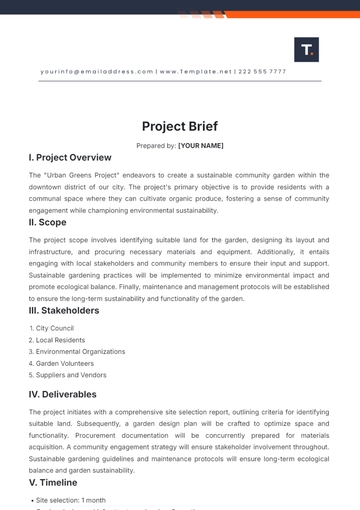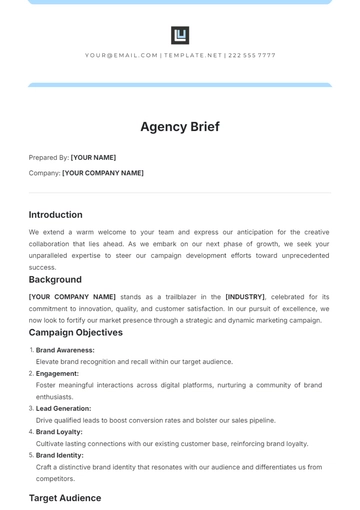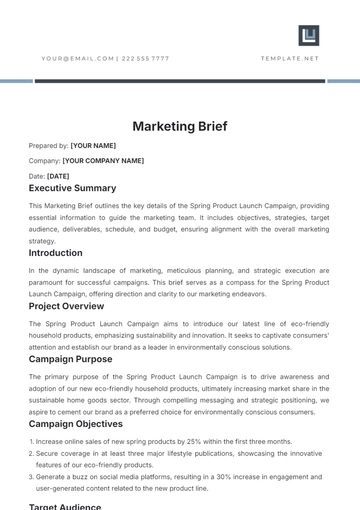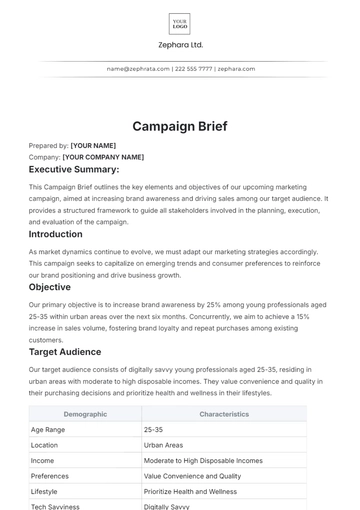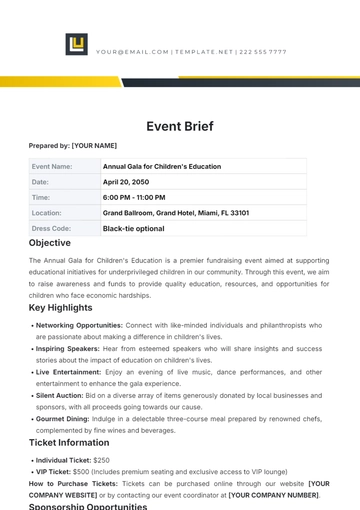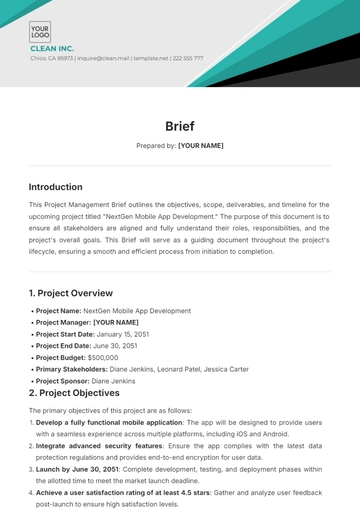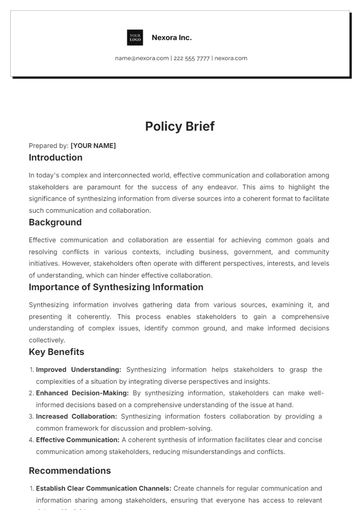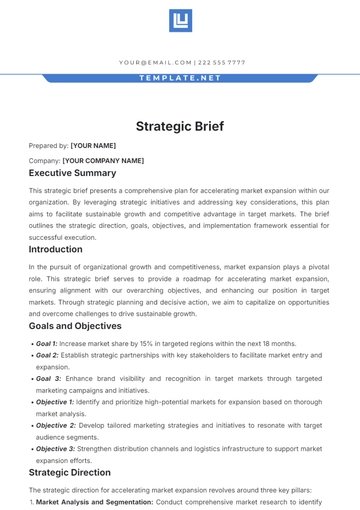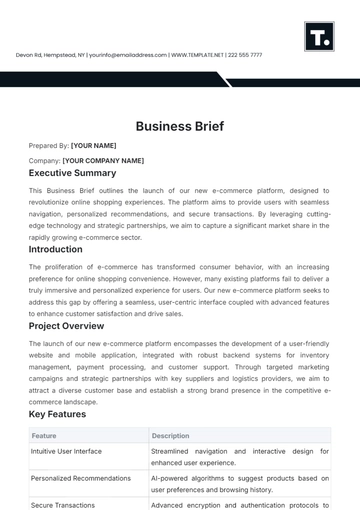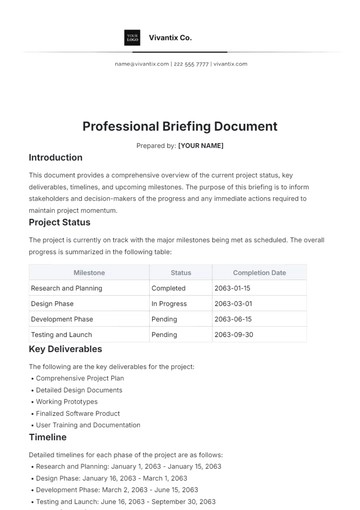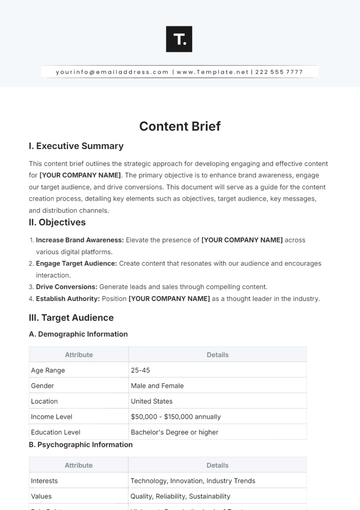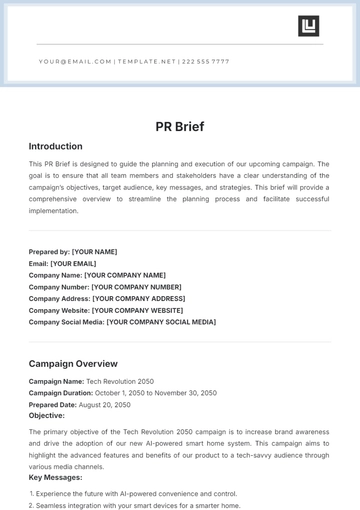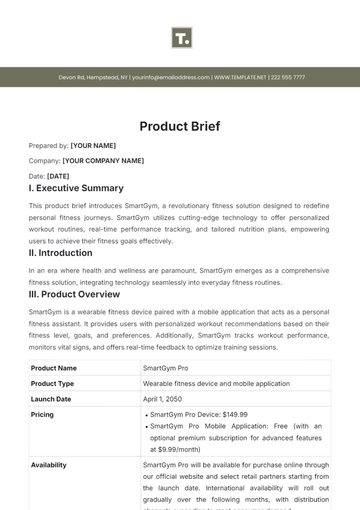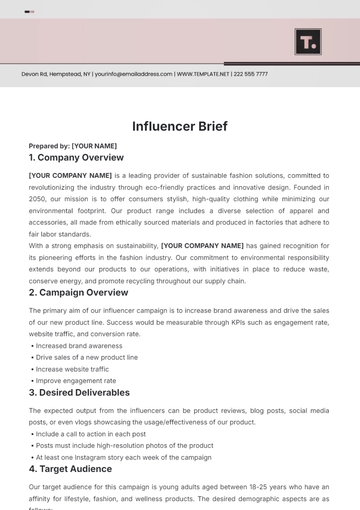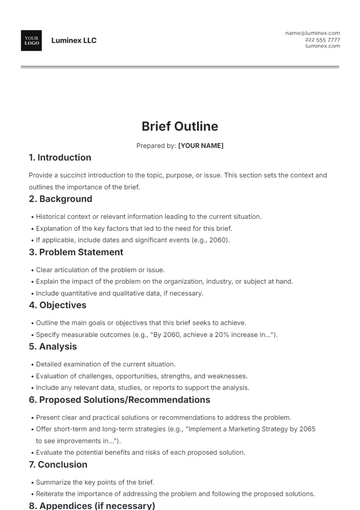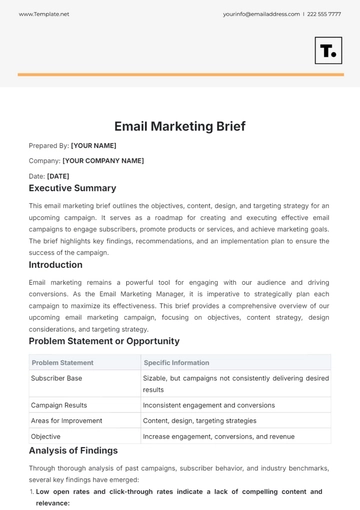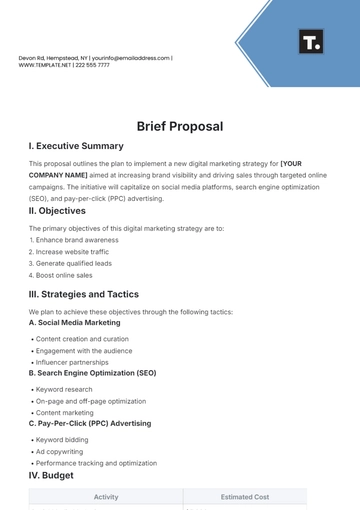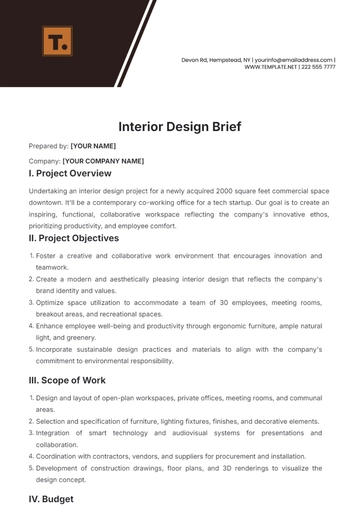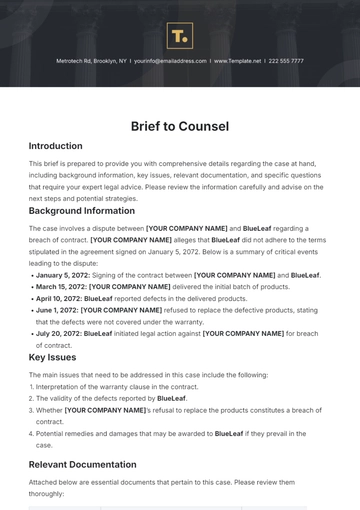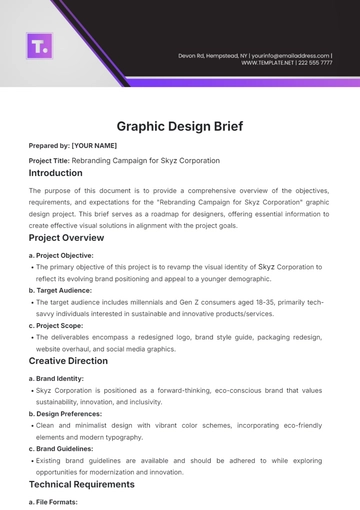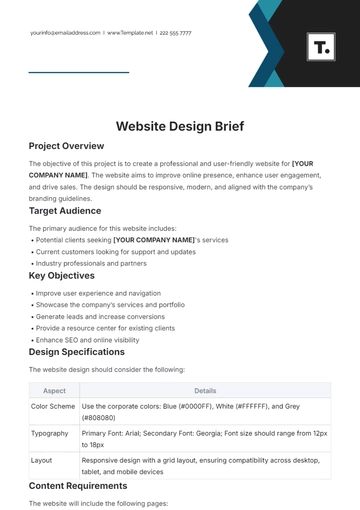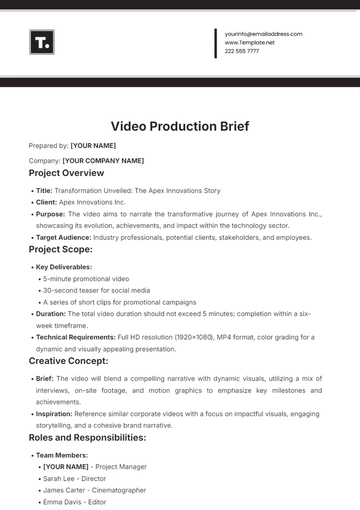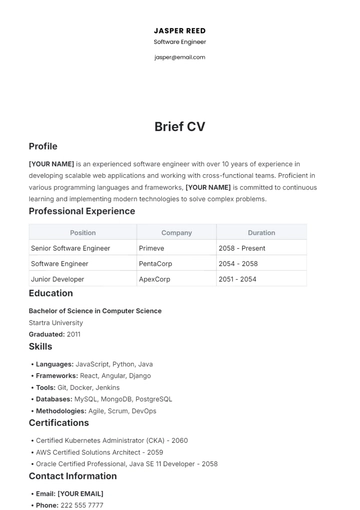Free Learning Brief
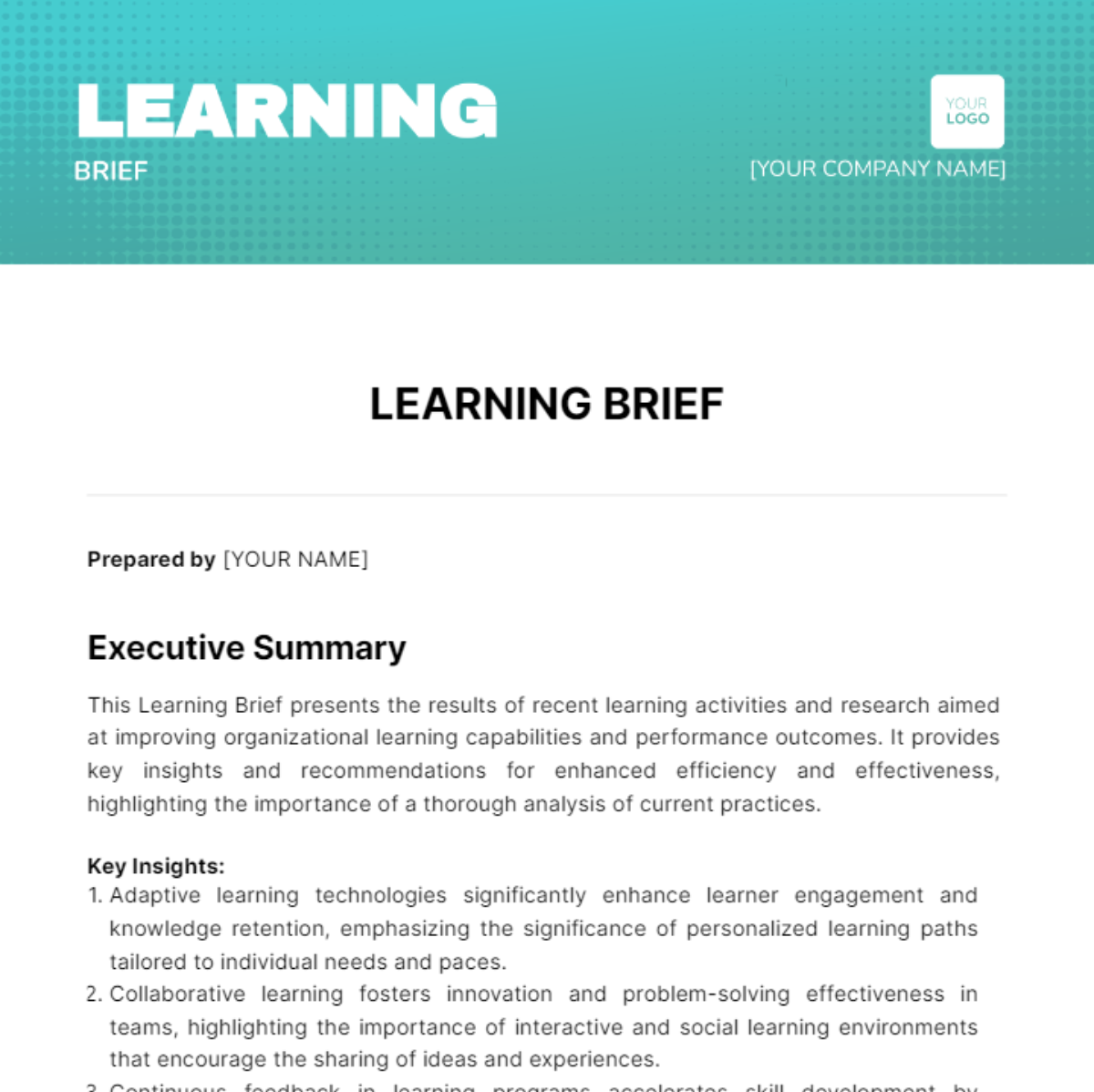
Prepared by [YOUR NAME]
Executive Summary
This Learning Brief presents the results of recent learning activities and research aimed at improving organizational learning capabilities and performance outcomes. It provides key insights and recommendations for enhanced efficiency and effectiveness, highlighting the importance of a thorough analysis of current practices.
Key Insights:
Adaptive learning technologies significantly enhance learner engagement and knowledge retention, emphasizing the significance of personalized learning paths tailored to individual needs and paces.
Collaborative learning fosters innovation and problem-solving effectiveness in teams, highlighting the importance of interactive and social learning environments that encourage the sharing of ideas and experiences.
Continuous feedback in learning programs accelerates skill development by providing real-time adjustments and personalized support, optimizing the learning experience, and enhancing professional skills among participants.
Recommendations:
Invest in adaptive learning platforms to maximize personalized learning benefits, including software procurement and educator and learner training to maximize the utility of these tools.
Encourage collaborative project-based learning across departments by forming cross-functional teams for specific projects, enhancing learning through practical application and peer-to-peer interaction.
Implement a structured, continuous feedback system for all learning programs, utilizing digital tools, regular review meetings, and personalized coaching sessions to address individual learning needs.
Background
This table serves as a concise summary, providing a snapshot of the reasons behind the learning activities (Initiating Event), what they aim to achieve (Objectives), and who is involved or affected (Stakeholders). Each entry is kept brief to ensure the section remains an overview, allowing readers to quickly understand the context without getting into the detailed content of the Learning Brief.
Initiating Event | Objectives | Stakeholders |
|---|---|---|
Implementation of a New Learning Management System | - To streamline the delivery of online training courses. - Enhance user engagement and satisfaction. | - IT Department - Training Coordinators - Employees |
Annual Employee Performance Reviews | - Identify skill gaps within teams. - Develop a targeted professional development plan. | - HR Department - Managers - Employees |
Shift to Remote Work Environment | - Ensure a seamless transition to remote work. - Maintain productivity and communication efficiency. | - Senior Management - All Department Heads - IT Support Team |
Methodology
The Methodology section of a Learning Brief explains the strategies and processes used to collect and analyze data, ensuring that the insights and recommendations are based on solid evidence. Here's an example:
Data Collection Methods:
Online Surveys: We distributed online surveys to all participants involved in the learning activities. These surveys were designed to capture quantitative data on participant engagement, satisfaction levels, and perceived knowledge gain. The surveys included a mix of Likert-scale questions, multiple-choice questions, and open-ended responses to gather a comprehensive view of the participant's experience.
Focus Group Discussions: We conducted a series of focus group discussions with selected participants from different departments. These discussions aimed to delve deeper into the qualitative aspects of the learning experience, uncovering insights into the effectiveness of collaborative learning environments and the impact of feedback on learner development.
Data Analysis Techniques:
Descriptive Statistics: We employed descriptive statistical analysis to summarize the survey data, providing insights into the central tendencies and variability of participant responses. This approach helped in understanding the general patterns of engagement and satisfaction across the learning initiatives.
Thematic Analysis: For the qualitative data gathered from focus group discussions, we applied thematic analysis to identify, analyze, and report patterns (themes) within the data. This technique was instrumental in interpreting the nuanced aspects of the learning experience, such as the intrinsic motivators for learning and the perceived barriers to effective knowledge acquisition.
Findings
These findings are presented as clear, quantifiable evidence supporting the conclusions and recommendations of the Learning Brief. By showcasing specific metrics and insights, the document underscores the effectiveness of certain interventions or practices and highlights areas for future focus or improvement.
Key Finding | Metrics/Insights |
|---|---|
High Engagement in Adaptive Learning Modules | 85% of participants completed all adaptive learning modules, with a 40% higher engagement rate compared to traditional e-learning formats. |
Significant Skill Improvement in Collaborative Projects | Participants involved in collaborative projects showed a 50% improvement in targeted skill assessments compared to those engaged in solo learning activities. |
Positive Correlation Between Feedback Frequency and Learning Satisfaction | 90% of learners who received weekly feedback reported high levels of satisfaction and perceived improvement, compared to 60% satisfaction among those with less frequent feedback. |
Recommendations
These recommendations are formulated to directly address the insights gained from the research, aiming to leverage strengths and address areas needing improvement. Implementing these suggestions could lead to enhanced learning outcomes, greater learner satisfaction, and overall organizational growth.
Expand Adoption of Adaptive Learning Technologies:
Rationale: Given the high engagement rates in adaptive learning modules, expanding their use can enhance learning outcomes across the organization.
Action Steps: Invest in additional adaptive learning platforms and incorporate them into a wider array of training programs. Provide training for instructors on how to effectively utilize these technologies to tailor learning experiences to individual needs.
Foster Collaborative Learning Environments:
Rationale: The significant skill improvement observed in participants of collaborative projects underscores the value of peer-to-peer learning and teamwork.
Action Steps: Design and implement more project-based learning initiatives that require cross-departmental collaboration. Create a framework for project selection, team formation, and outcome evaluation to ensure these projects are impactful and aligned with organizational goals.
Institute Regular and Structured Feedback Mechanisms:
Rationale: The positive correlation between feedback frequency and learning satisfaction highlights the importance of continuous feedback in enhancing the learning experience.
Action Steps: Develop a standardized feedback process that includes regular check-ins, digital feedback tools, and actionable insights for learners. Train managers and team leaders on effective feedback techniques to ensure constructive and continuous learner support.
- 100% Customizable, free editor
- Access 1 Million+ Templates, photo’s & graphics
- Download or share as a template
- Click and replace photos, graphics, text, backgrounds
- Resize, crop, AI write & more
- Access advanced editor
Elevate your educational materials with Template.net's Learning Brief Template. Designed for educators and trainers, this customizable and editable template, accessible in our AI Editor Tool, streamlines the creation of concise learning guides. Perfect for any educational setting, it ensures your content is engaging and informative. Transform the learning experience with this essential tool.
